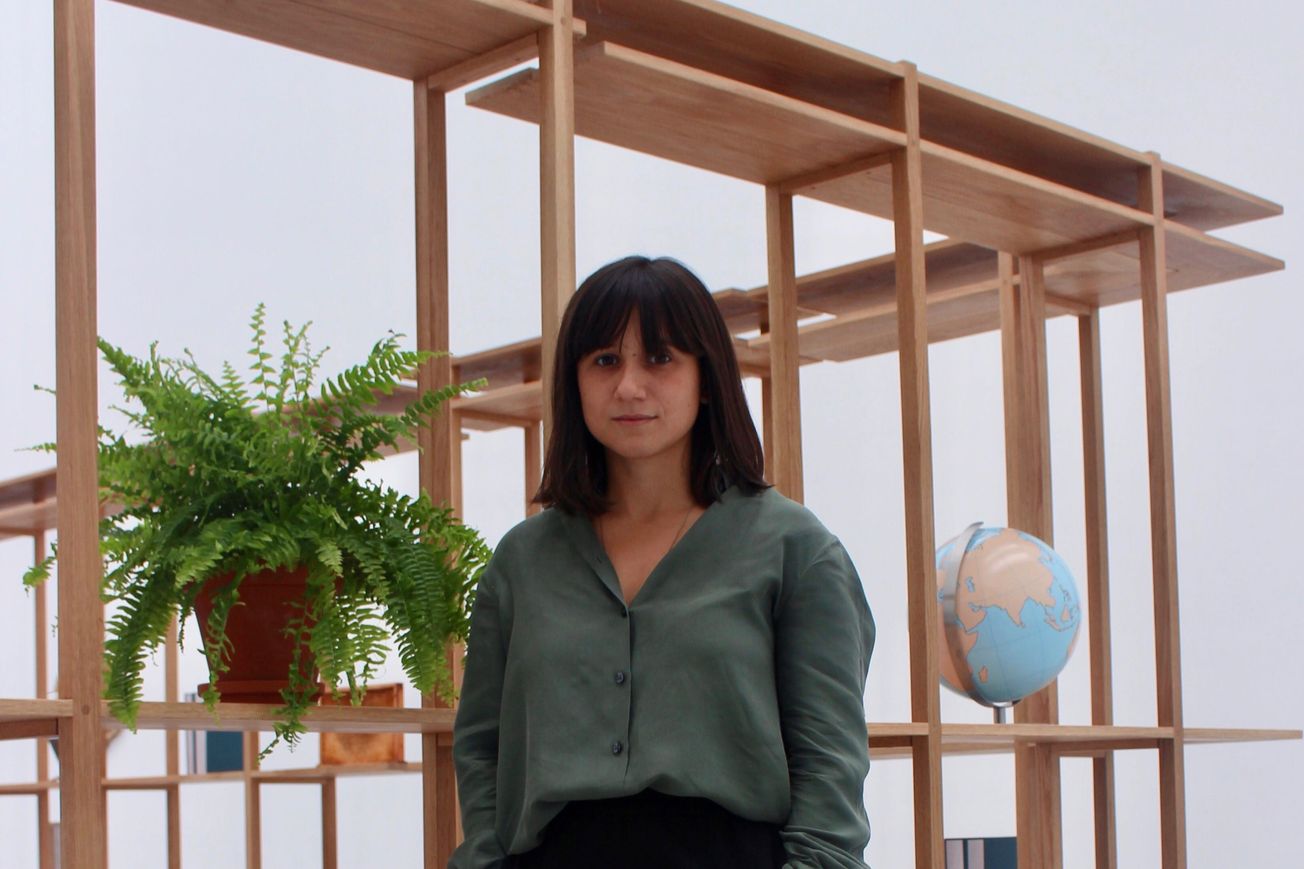By Serafina Lee, Deputy Digital Arts Editor
A dead bee stuck in a honey jar, a wax tongue, sultry Calvin Klein adverts. Conceptual artist Meriç Algün scatters the bizarre and ordinary throughout her ‘spatial collages’, exploring migration, excessive consumption, desire and nature. I talk to her about her solo exhibition Day Craving Night.
First of all, really generally, what is Day Craving Night all about?
'It is centred around the idea of the separation of continents, formations of boundaries and tying that to origins of desire; the human desire.'
What is the driving force and inspiration behind it?
'My work is generally informed by my personal life. I flew from Istanbul to Stockholm, which was quite a life changing experience as a twenty three year old; you’re just building your life, and then all of a sudden I was very aware of my national identity, my language, my movement. So my work started to shape in that way, it was quite a lot about migration and bureaucratic issues around it, and then over time I started engaging more with the issues of boundaries and personal relationships. How do you form a good relationship with someone?'
You work with such a variety of media, which ones are you particularly drawn to, if any, and how does that connect to your personal experience or message?
'As you say, I work with a variety of materials because my work stems from an idea, at first, or a question, so there isn’t this occupation with the material in the studio; it comes from whatever the idea requires. It could be a moving image or it could be stencils on a wall, or it could be a collection of advertisements or fossils. I’m realising that it’s more a collection of materials bringing it together and then finding relationships between them. It’s almost like a collage, in a way, but not just work on paper, but spatial expressions.'
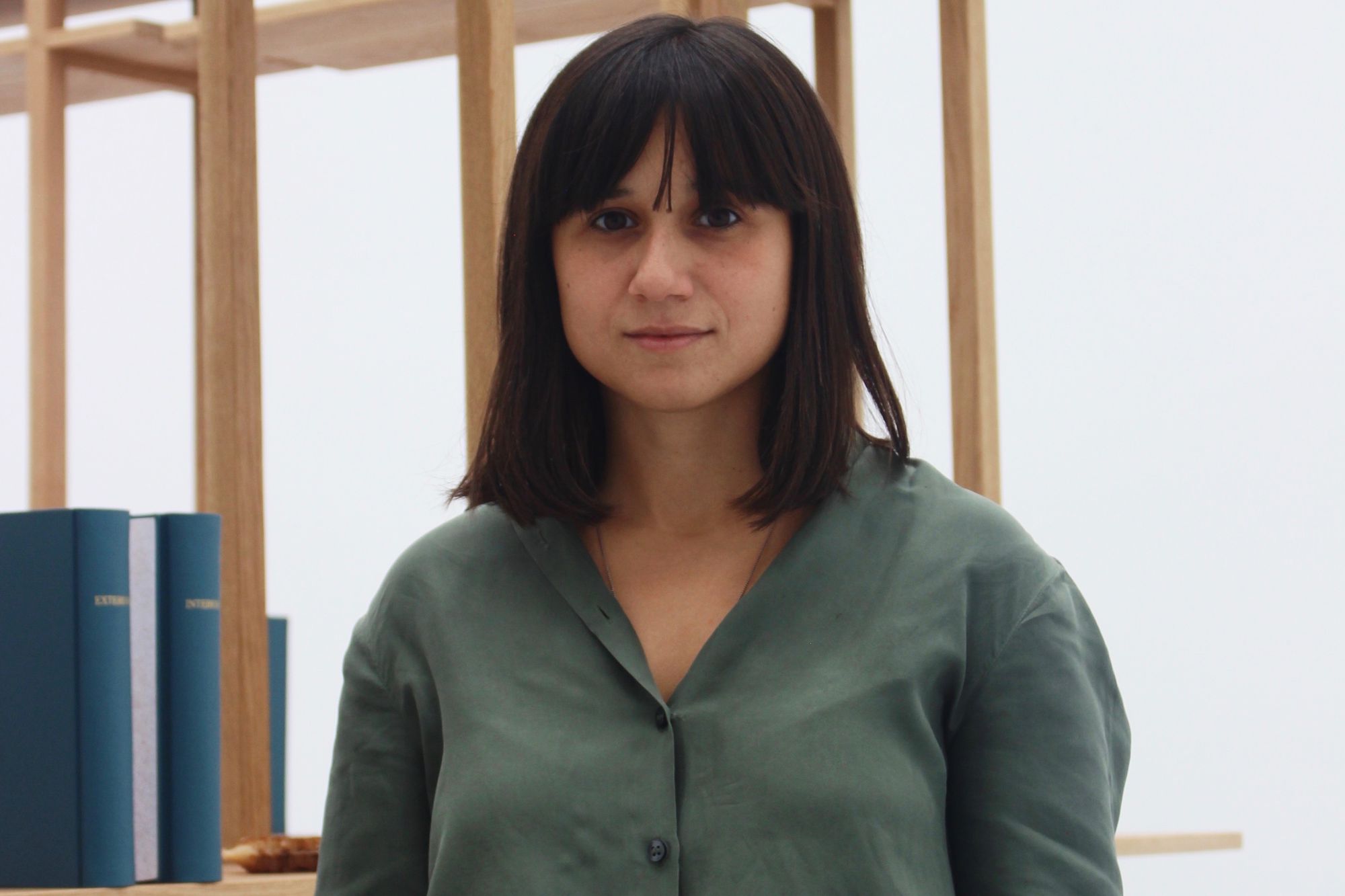
You mentioned your work deals a lot with rifts, separation and boundaries, but overall there seems to be a structural harmony. For example, in your piece Finding the Edge, the shelves seem structurally harmonious and symmetrical and yet there are these breaks between them. It seems to me that there is a duality presenting itself there; how do you navigate that balance?
'My work is really using this idea of control and structure quite a lot. In many of my works it feels very present, it’s never really very messy and sometimes it is quite clinical of sorts, and I think this came from interacting with systems, especially from my early years with the migration office, or with these kinds of situations in society.
'I find it very useful to borrow these structures and to speak about something that is more complex, in a way. With Finding the Edge; it is an allegory of the world; it’s the continents; it’s the before separation and the after. This 3 x 6 metre shelving unit is first a whole and then it is divided into 7 pieces by a chainsaw. So there is this playfulness around it; a whole and its parts.'
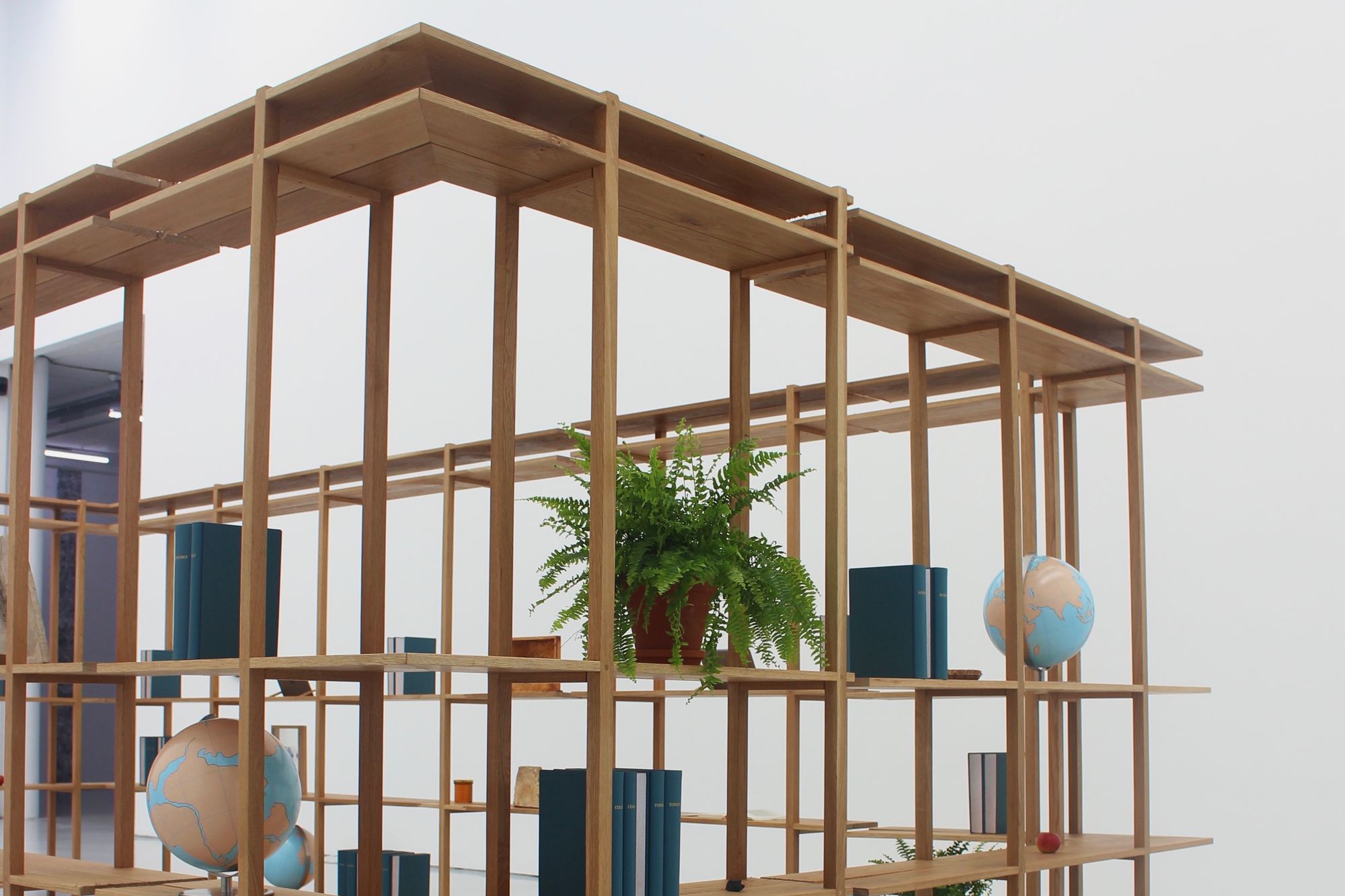
Another element I noticed in Finding the Edge were the natural forms of the ferns juxtaposed against the constructed forms of the shelving. How do you explore concerns of the geological?
'What really interests me is to use nature as a metaphor to understand culture. For me, nature can be a metaphor or symbol of time and time’s relationship to us, and how we relate to nature.
Nature can be a metaphor or symbol of time - Meriç Algün
'In the periphery of the exhibition, there is a work which I have borrowed from a Swedish artist called Goldin+Senneby where you can see this ghostly forest from 300 million years ago. These trees used to be a forest, and then the continents started moving so it ended up in other parts of the world, and then it started to decay, and then it was transformed into organic waste, and then coal, and then coal into energy, which in turn ruined the relationship. It has a cyclical relationship.
'What I am trying to say is that there is a lot in nature that one can observe and then understand something much more complex, like human relations.'

You are also dealing with such a vast time frame that goes back millions of years, would you say the temporal is an important theme?
'It has started to become more and more, I must say. I was quite immediately in relation to my surroundings at the beginning of my practise, but now I am expanding the time frame, especially with this recent body of work. It’s just an attempt to understand how we humans deal with our surroundings, what kind of impact do we make and how we actually can make things better.
'The exhibition has that tone to it, that we really need to deal with our desires of conquering and crossing boundaries and consuming; there is something there that I want people to think about.'
We really need to deal with our desire of conquering and crossing boundaries and consuming - Meriç Algün
That is especially prevalent now more than ever with the climate crisis.
'Yes, and I am trying to put that in relationship to love, because essentially the reason why people are so driven to more is because they probably lack something. The only way to get out of this is actually through relating to your surrounding people. There’s something there that I want people to consider and think about as they’re going through the exhibition, and doing this through nature is to me a really important element.
'There is, for example, a segment of a tree trunk where two growth rings are side by side, where essentially, two trees have grown together, and it’s such a beautiful allegory of this twosomeness instead of this one person drive.'
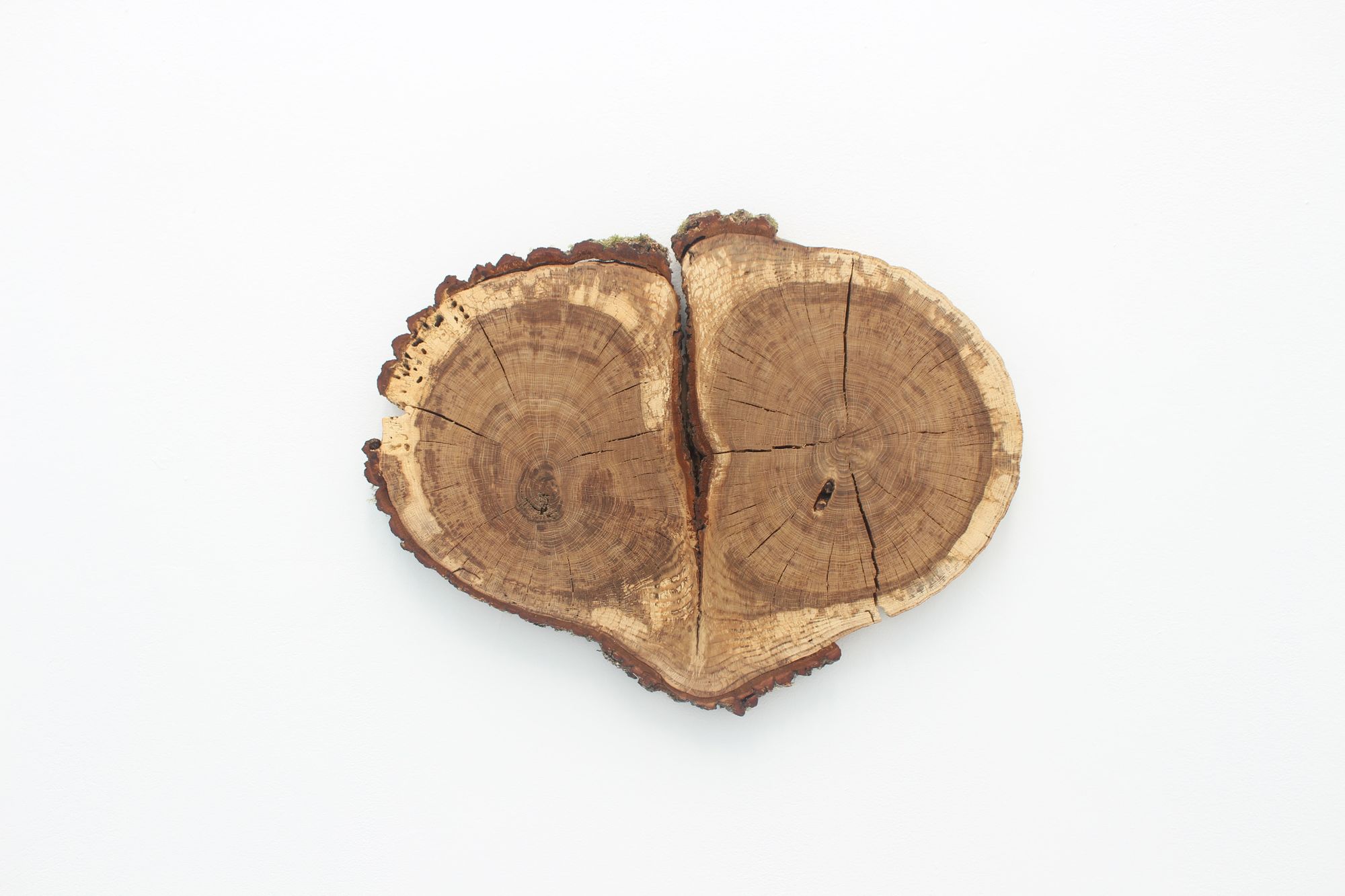
How do you explore love and desire in your work?
'It is a very challenging subject, because the moment you start speaking about it, it is a fairly generic topic. What I have been discovering is that when you start thinking and moving your thoughts around, it is very interesting and fruitful.
'At the moment I am writing a novel and there is a very small paragraph of text in this exhibition, and that’s how I’m working with it in one strand, the other strand is through objects and collections and things that come my way in the form of metaphors and texts.
'I found it very interesting reading Eros: the bittersweet by Anne Carson; she speaks about how reading and writing itself is an experience that you can put in relationship to Eros and desire. She speaks about the transition from oral to written tradition and how in the oral tradition you are connected to everyone else by air and speech. When the Greeks invented the alphabet and writing was developed, there was a shift in the content that they were producing, which is very much about love and desire. She doesn’t think this was coincidental, because this reading and writing experience is something very internalising and makes you aware of yourself. I find this interesting in relation to how I have been working.'
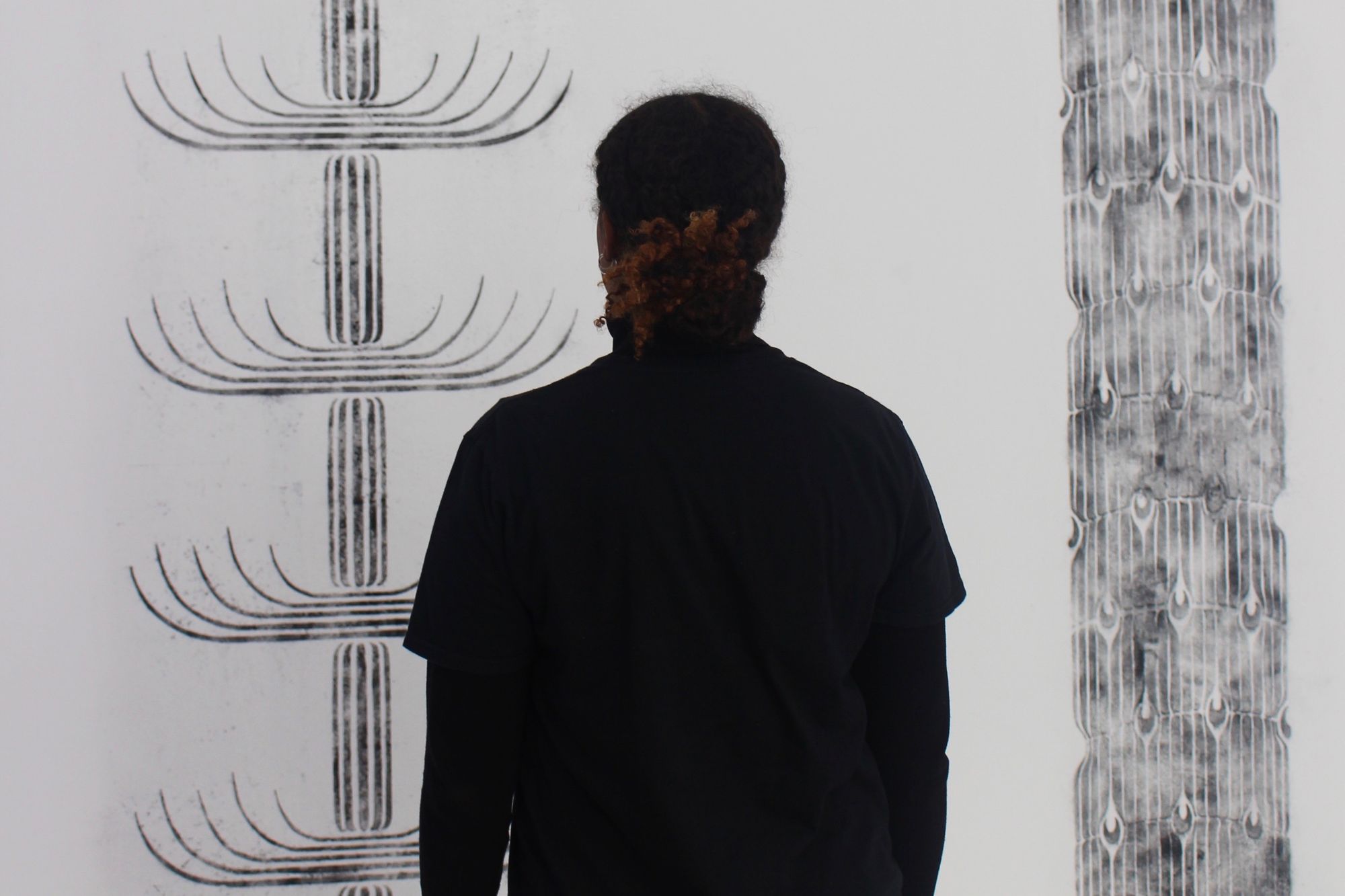
Would you say your artwork is primarily conceptual, inviting the audience to make their own deductions from the separate parts?
'It is, because it always stems from an idea, which is the premise of conceptual practise. But it is very informed by other people’s texts, in this exhibition I’ve been using quite a lot of Anne Carson’s ideas around desire and Eros, especially in ancient Greece and Greek poetry.
In this exhibition I've been using quite a lot of Anne Carson's ideas around desire and Eros - Meriç Algün
'So there is a lot of research and ideas around it, but I also don’t think that we need to know everything in order to get your head going. Especially with Finding the Edge, you should be able to just go into it yourself and have your own ideas, so in that sense there is no set formula or response, it is more intuitive and open ended, which is maybe less conceptual.'
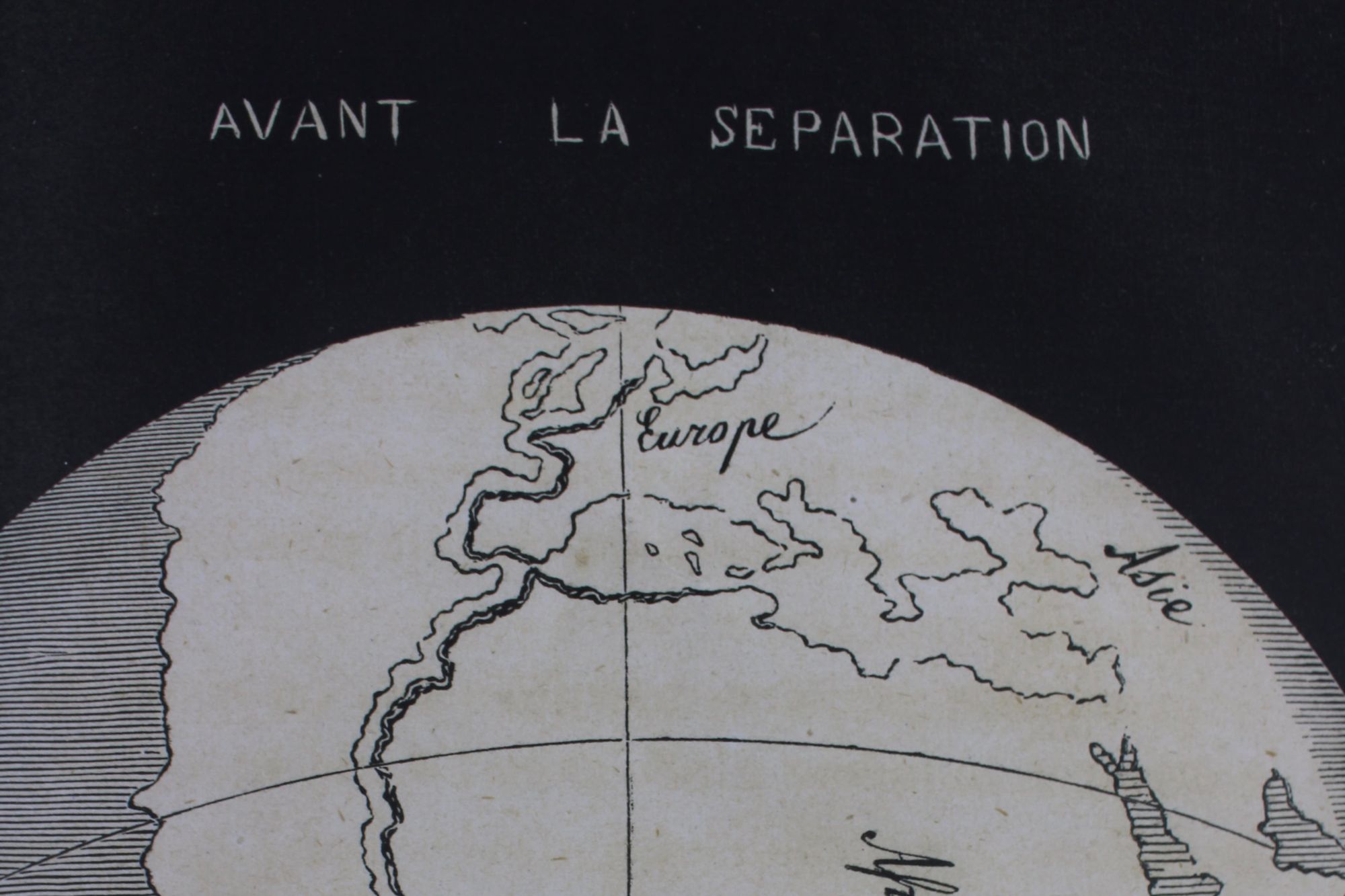
I think also because you use your space so well, it invites people to go in and form their own conceptions. It is pushing against the preconceived idea that a lot of conceptual art is inaccessible.
'That makes me very happy to hear. The reason why I am making work is because I want to have a connection with people, or I want people to connect to it, so that’s very nice to hear. It is of course challenging because you never know what kind of connections you can make for people, or how the work will resonate, but there’s always that attempt.'
Featured Image: Epigram/Serafina Lee
Will you be heading over to Spike Island to see Day Craving Night?

